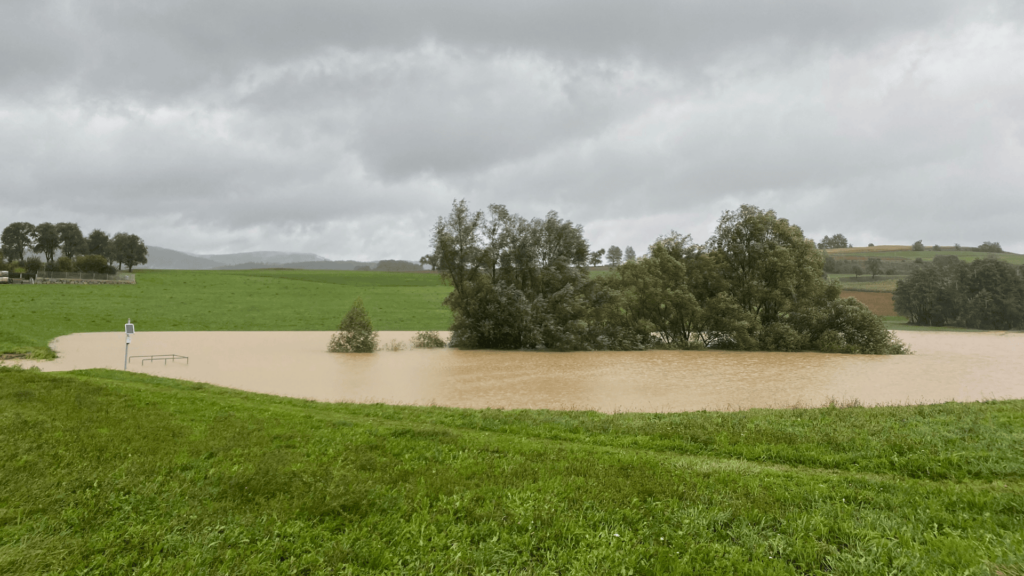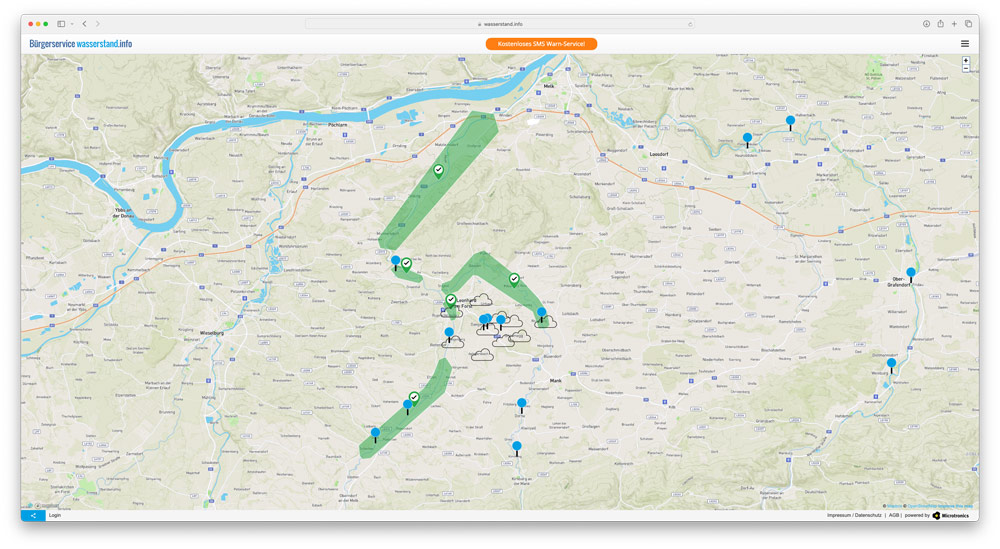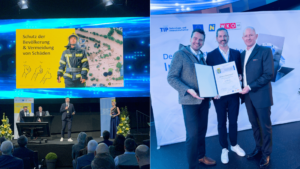In the event of a disaster, the early detection of small-scale flooding promises a revolutionary time saving of 15 to 30 minutes for emergency services and those affected. These extra minutes are valuable for taking preventive measures and minimising damage. The system is specifically designed for small regional catchment areas of less than 10 km². It uses a network of IoT sensors and advanced AI algorithms to detect flooding at an early stage.
Compared to existing systems, which focus mainly on large rivers such as the Danube and operate at relatively slow measurement intervals of around 15 minutes, this system relies on much faster collection of relevant data. The sensors measure the current rainfall and water levels in the region in less than a minute and compare them with the maximum capacity of the area. This speed is crucial because small-scale flooding often occurs in a very short time and therefore requires an immediate, faster response.
15-30 minutes of time saved through early detection in the event of a disaster
An outstanding feature of the early warning system for small regional floods is its ability to warn of impending flooding up to 30 minutes in advance. This extra time can make the difference between a controlled emergency response and a chaotic situation in which resources cannot be optimally used. The first pilot projects are already showing how effectively the system works in practice. The system has been successfully implemented in the municipality of Ruprechtshofen in the district of Melk and is currently being rolled out in the district of Amstetten. Other municipalities in the districts of Melk and Scheibbs are also planning to use the system.

Market opportunities in Europe
The market opportunity for early detection of small regional flooding is huge. With climate change and the associated increase in extreme weather events, the risk of flooding in Europe will continue to rise. According to a study by the Taylor Francis Group, the damage caused by floods could rise to €40 billion by 2050. This is where the early warning system for small regional flooding comes in, to protect people and buildings in advance and gain valuable time in the event of an emergency.
Partners involved
With the support of renowned partners such as EPZ (Natural Hazard Prevention Centre), Dr Hans Starl (expert in natural hazard management), Vienna University of Technology and BOKU, and the technical expertise of Microtronics, this system has the potential to become a leader not only in Austria but in Europe over the next five years. The current test pilot, which will run for 24 months, will provide important insights that will be incorporated into the further development of the system.
Current water levels can be viewed on the website wasserstand.info. It is also possible to alert the emergency services and, subsequently, citizens.



